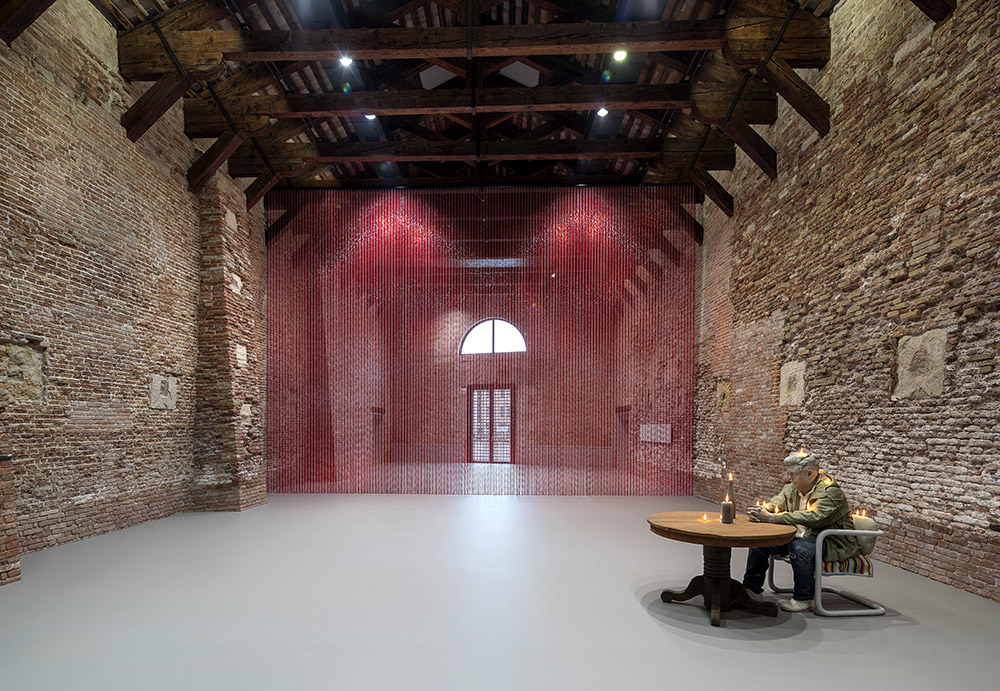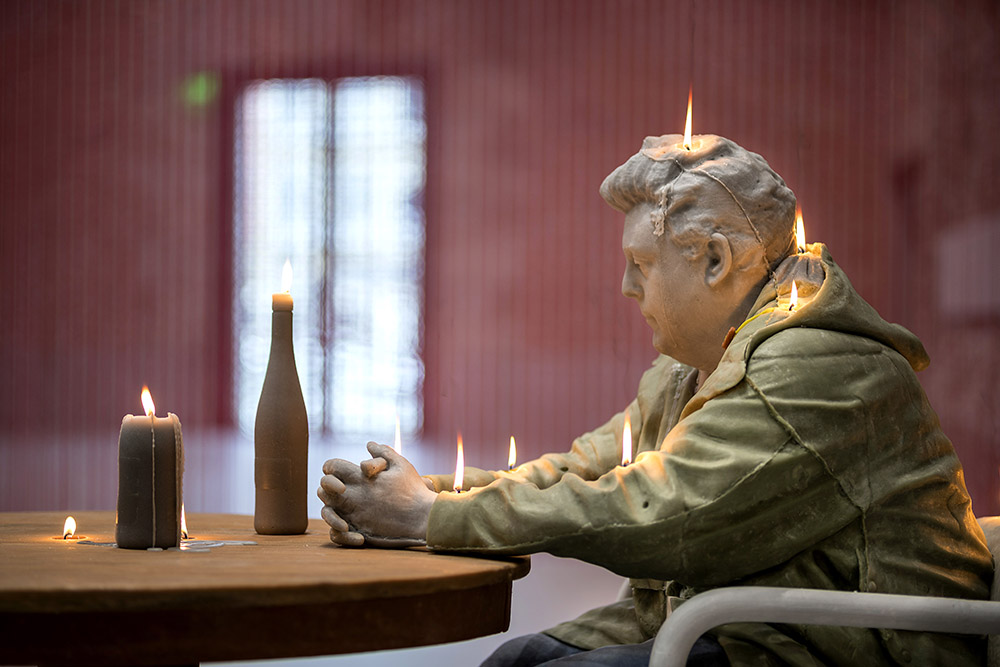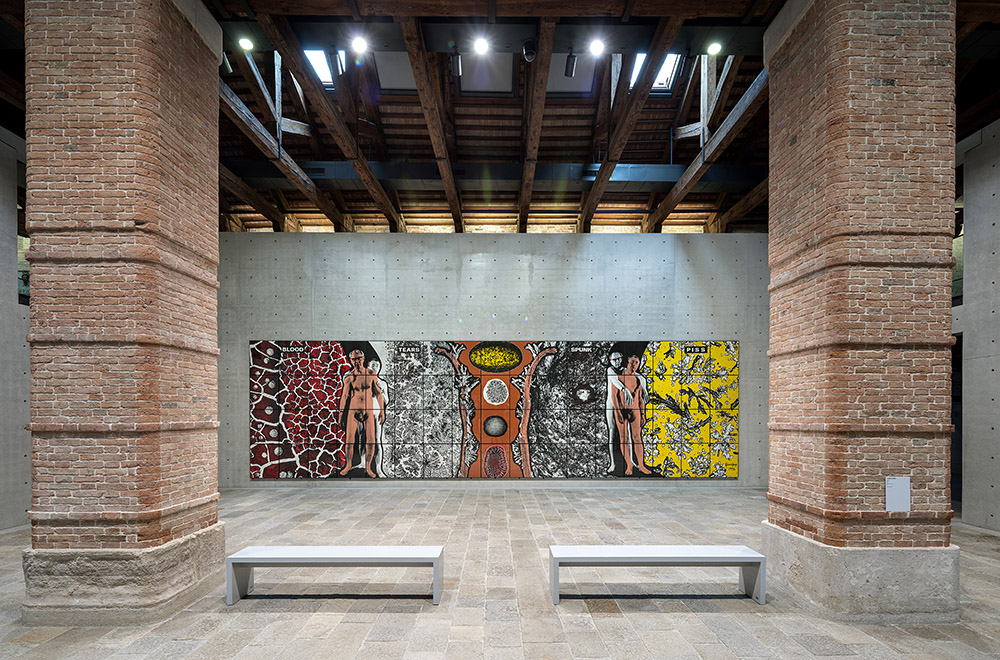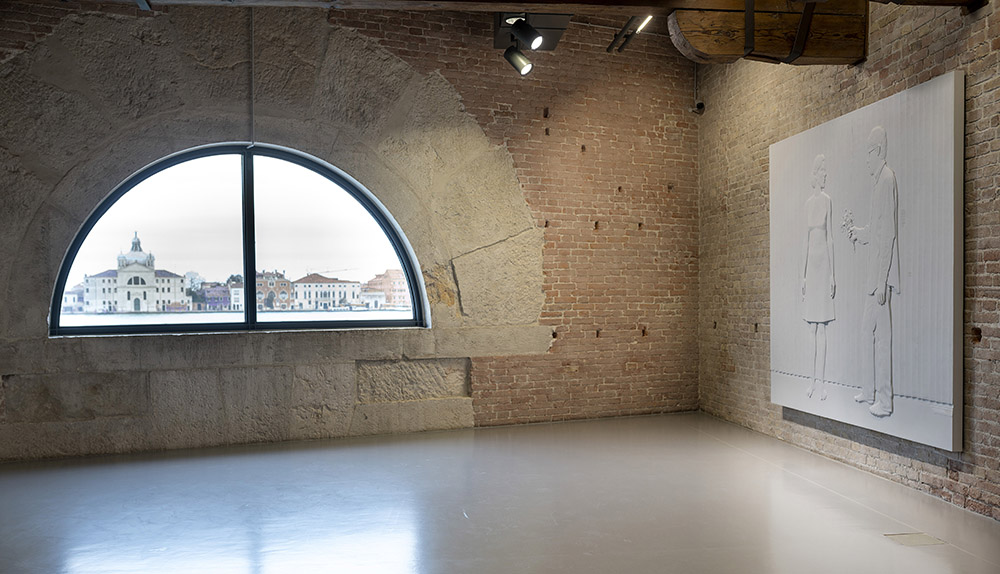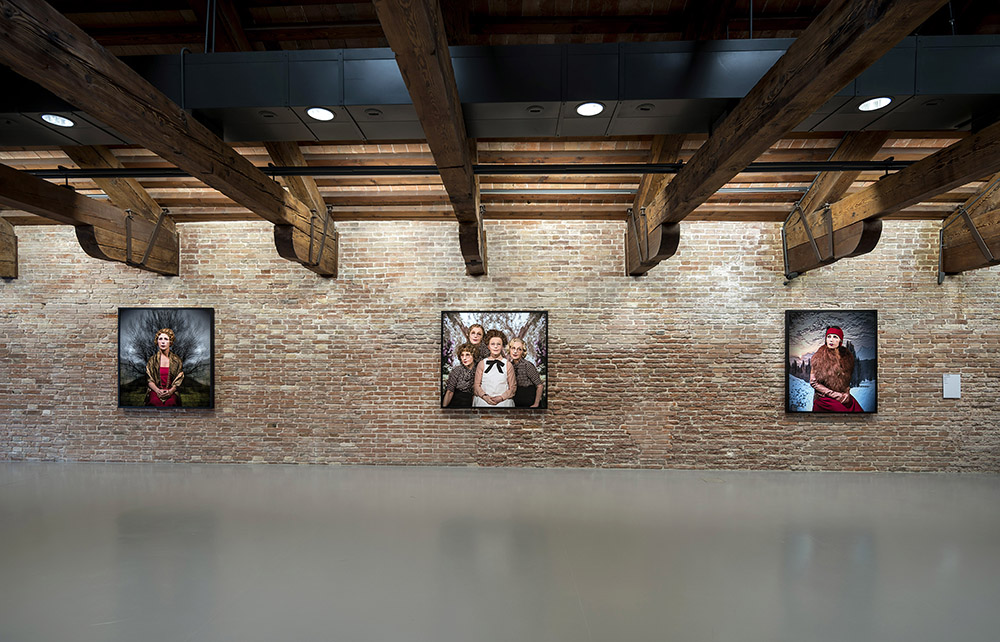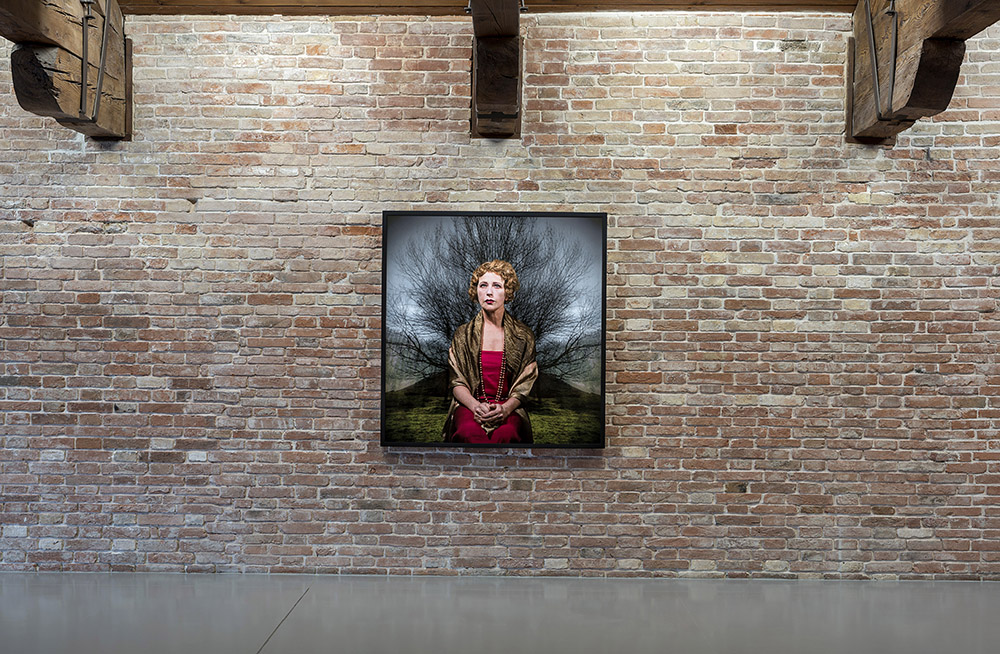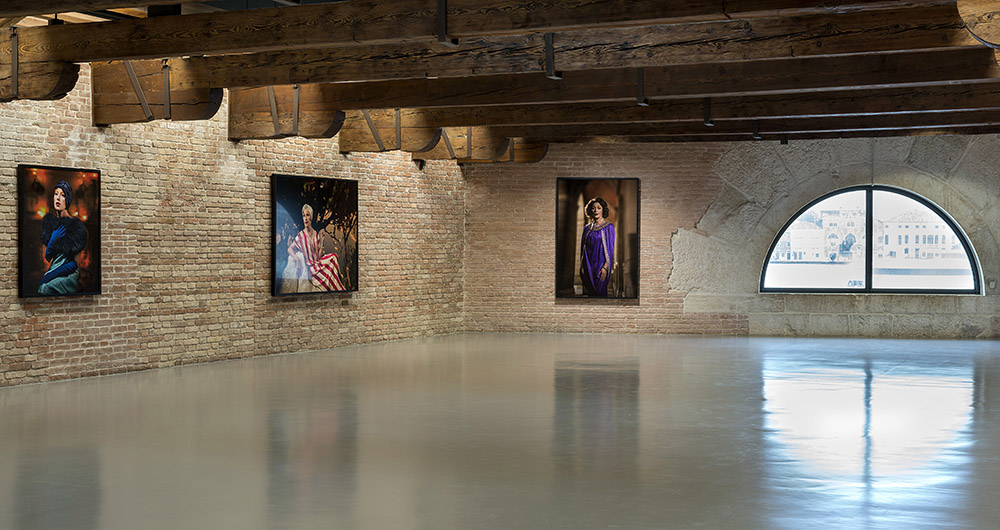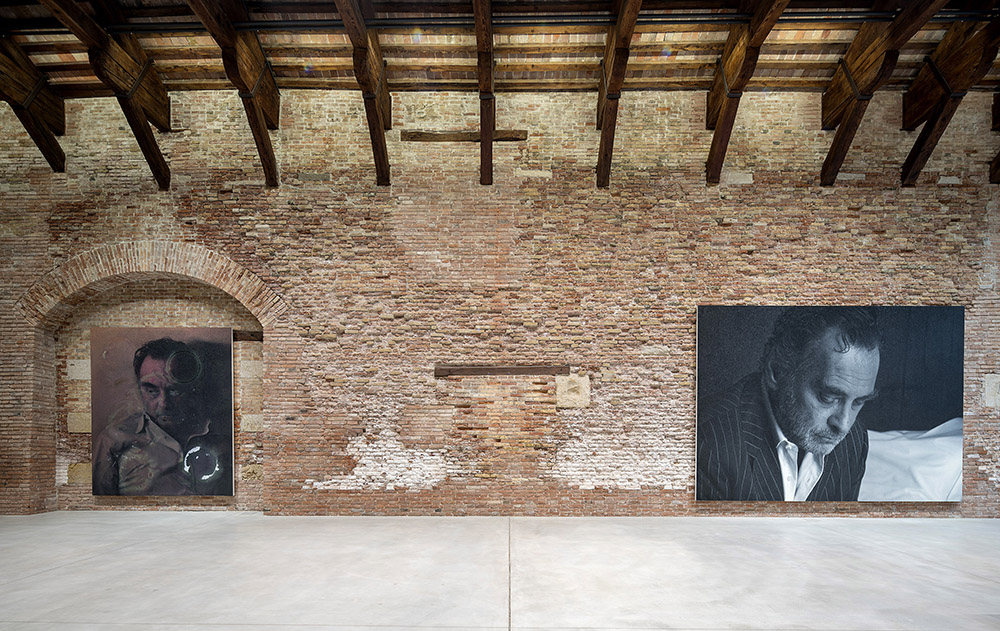ART CITIES:Venice-Dancing with Myself
 In the group exhibition “Dancing with Myself”, the artist’s own body is the starting point for the act of artistic creation and instigates a critical engagement with the self that goes beyond the classical self-portrait. The presence of the artist is shown in the individual works in a wide range of forms: body, biography, social and sexual identity, humor, melancholia — all these aspects either play a part in or serve as material for the artistic work.
In the group exhibition “Dancing with Myself”, the artist’s own body is the starting point for the act of artistic creation and instigates a critical engagement with the self that goes beyond the classical self-portrait. The presence of the artist is shown in the individual works in a wide range of forms: body, biography, social and sexual identity, humor, melancholia — all these aspects either play a part in or serve as material for the artistic work.
By Dimitris Lempesis
Photo: Pinault Collection Archive
“Dancing with Myself” elaborates on the tremendous productivity (and also provocation) that can come out of this artistic encounter with the self. Beginning with the playfully Dadaist preoccupation with the close-at-hand, using one’s own body as a tool, the exhibition covers a broad spectrum ending with the individual’s political deployment of his or her own person. The exhibition is divided into four sections (Melancholia, Identity Games, Political Autobiographies, Raw Material), that develop evenly through the spaces of Punta della Dogana with over 140 works. 116 works from the Pinault Collection, of which more than 80 have never been exhibited in Venice, establish a dialogue with a selection of works from Museum Folkwang in Essen. Allan Sekula took the photos that he would subsequently put together to create the Self-Portrait as “Sculptor/Painter/Photographer” (1972), when he was twenty-one and still an art student. At first, the three shots seem to simply quote the formal vocabulary of the Classical self-portrait: the artist with the tools of his art. On closer inspection, the viewer notices the contrast between the poses the young artist adopts for the camera, whose manner and tone fit with the rebellious nature of the 1968 generation, and the crudeness of his accoutrements: the welding goggles smeared with paint, the shapeless white form in his hands. Sekula’s triptych thus seems to be not so much a self-portrait as an ironic self-interrogation. Adel Abdessemed’s “Talk Is Cheap” (2006) builds on the gestures of American artists of the 1970s, such as Bruce Nauman and Chris Burden. It is part of a series of street actions in which Abdessemed focuses on objects all of which he crushes violently underfoot), people and wild animals. Alighiero & Boetti’s “Autoritratto” (1993-94) is a bronze sculpture which is heated to a high temperature through a built-in electric device. It shows the artist showering himself with a hose he holds above his head, and as the water comes in contact with his heated head, the latter gives off steam. It is an ironic metaphor for the process of artistic creation, but it is also a self-portrait of a man facing illness and death: in 1993, Boetti had already been diagnosed with the brain tumor that would carry him off a year later. LaToya Ruby Frazier’s photo series “The Notion of Family”, in which the artist portrays herself and her family in her hometown in Pennsylvania, links the private with the political. After the closure of the steelworks, which had been the backbone of the city’s economy since the 1970s, followed shortly afterwards by the hospital, the region’s economic, social, and healthcare structures gradually collapsed, leaving the socially weakest families in a polluted environment. David Hammons’ five-minute video “Phat Free”, is based on a performance from 1995. The film begins in total darkness, the only sound a tinny clatter. The action starts two minutes in, shot in a style that is crude and blurry: we see Hammons, dressed in black, kicking a metal bucket along a street at night. Hammons plays on the term ‘kicking the bucket’ to evoke the transience of life. The bucket, an everyday object, nevertheless produces a disconcerting sound in the urban space. In the video this evolves into a musical rhythm that fractures the august atmosphere of the museum room in which the piece is typically installed. “Cold Breath” is a film of enormous intimacy and intensity. Steve McQueen filmed himself touching his own body, his actions switching between the erotic and the painful, in what may also be seen as a narcissistic experiment. McQueen’s films revolve around extreme physicality; his precisely specified installations place viewers in a physical relationship with the bodies he films. Unpleasant, voyeuristic, exhilarating, excruciating, erotic—these sensations may overlap with one another as one watches the film. As in many of his other pieces, McQueen deploys his own body autobiographically and uses it to circle around questions of identity, racial and social conventions, of compulsions and taboos. On presentation are works by: Adel Abdessemed, Marcel Bascoulard, Alighiero Boetti, Marcel Broodthaers, Claude Cahun, Maurizio Cattelan, John Coplans, Urs Fischer, Ruby LaToya Frazier, Lee Friedlander, Gilbert & George, Robert Gober, Nan Goldin, Felix Gonzalez-Torres, David Hammons, Damien Hirst, Roni Horn, Martin Kippenberger, Kurt Kranz, Lüthi Urs, Steve McQueen, Bruce Nauman, Paulo Nazareth, Giulio Paolini, Arnulf Rainer, Charles Ray, Lili Reynaud-Dewar, Ulrike Rosenbach, Allan Sekula, Cindy Sherman, Rudolf Stingel and Alina Szapocznikow.
Info: Curators: Martin Bethenod and Florian Ebner, Palazzo Grassi-Punta della Dogana, Dorsoduro 2, Venice, Duration: 8/4/18-16/12/18, Days & Hours: Mon & wed-Sun 10:00-19:00, www.palazzograssi.it
